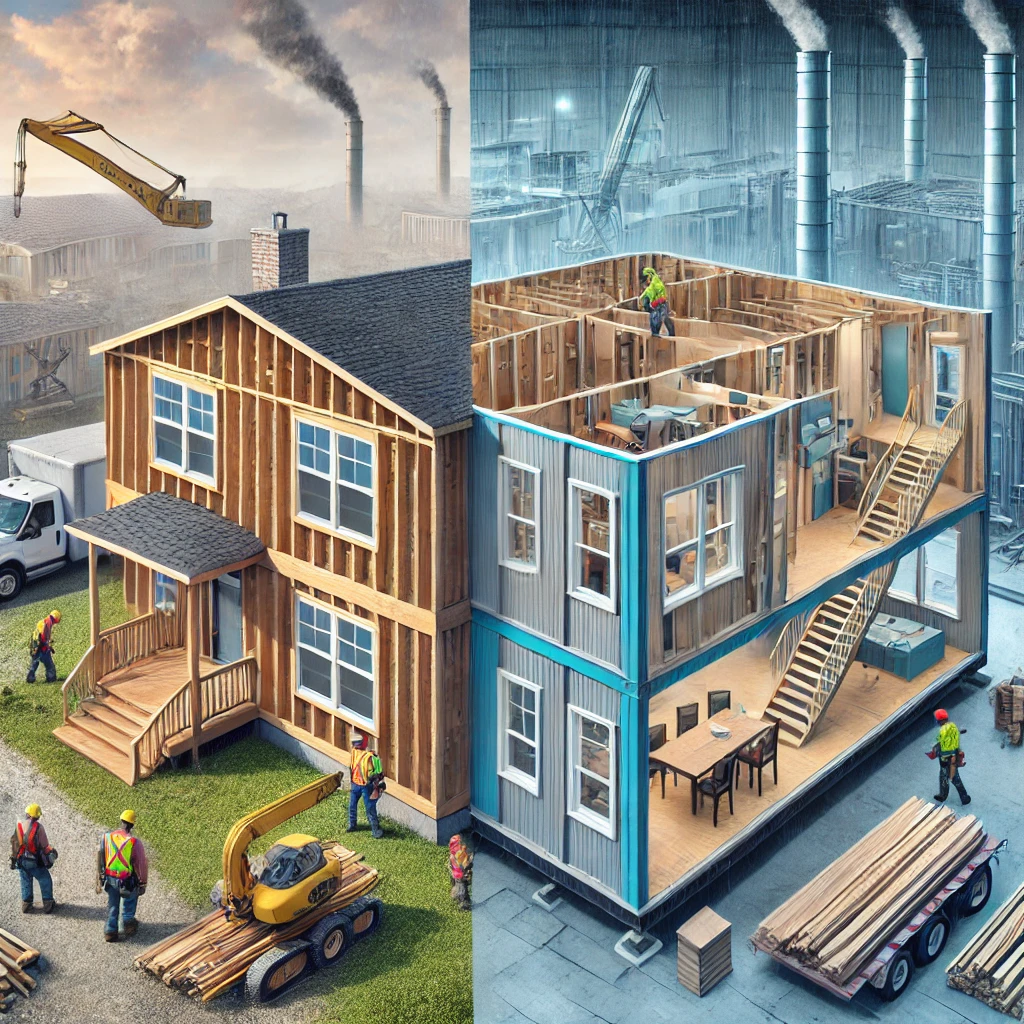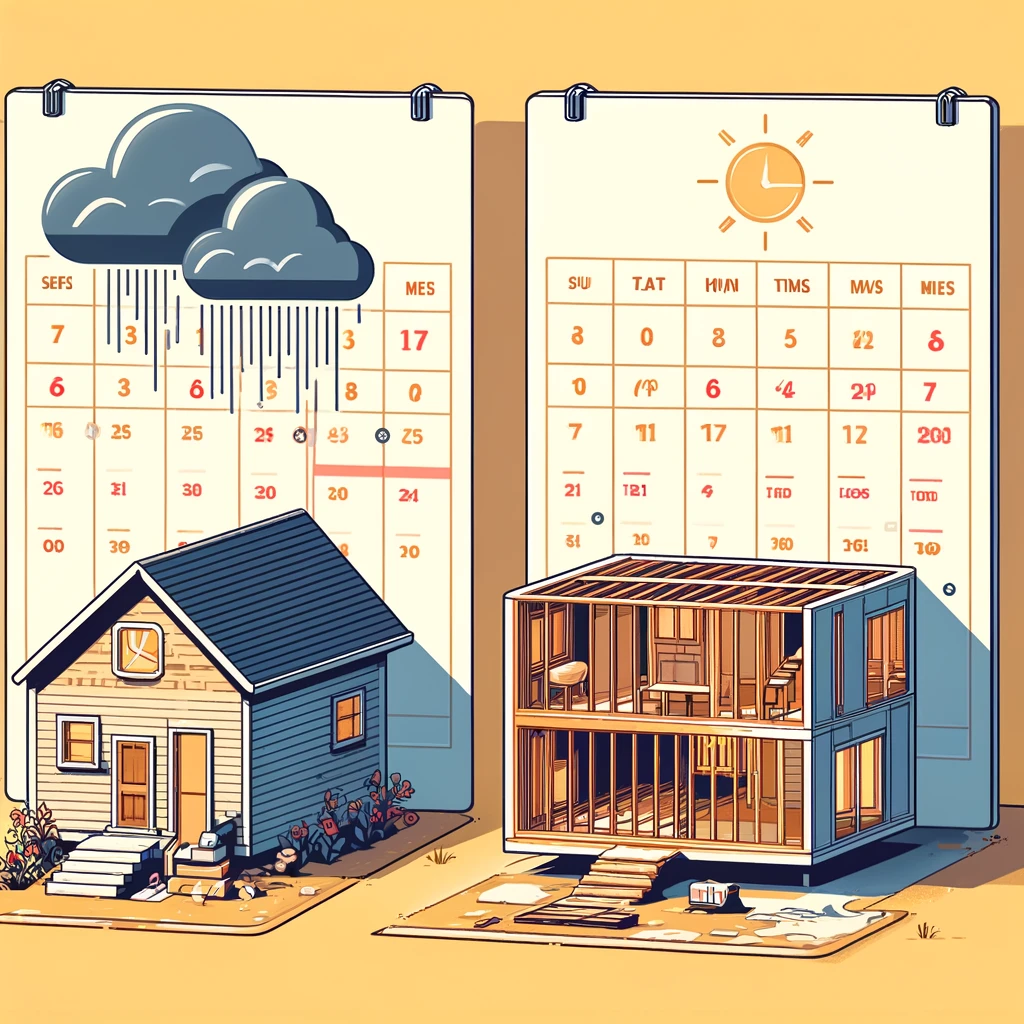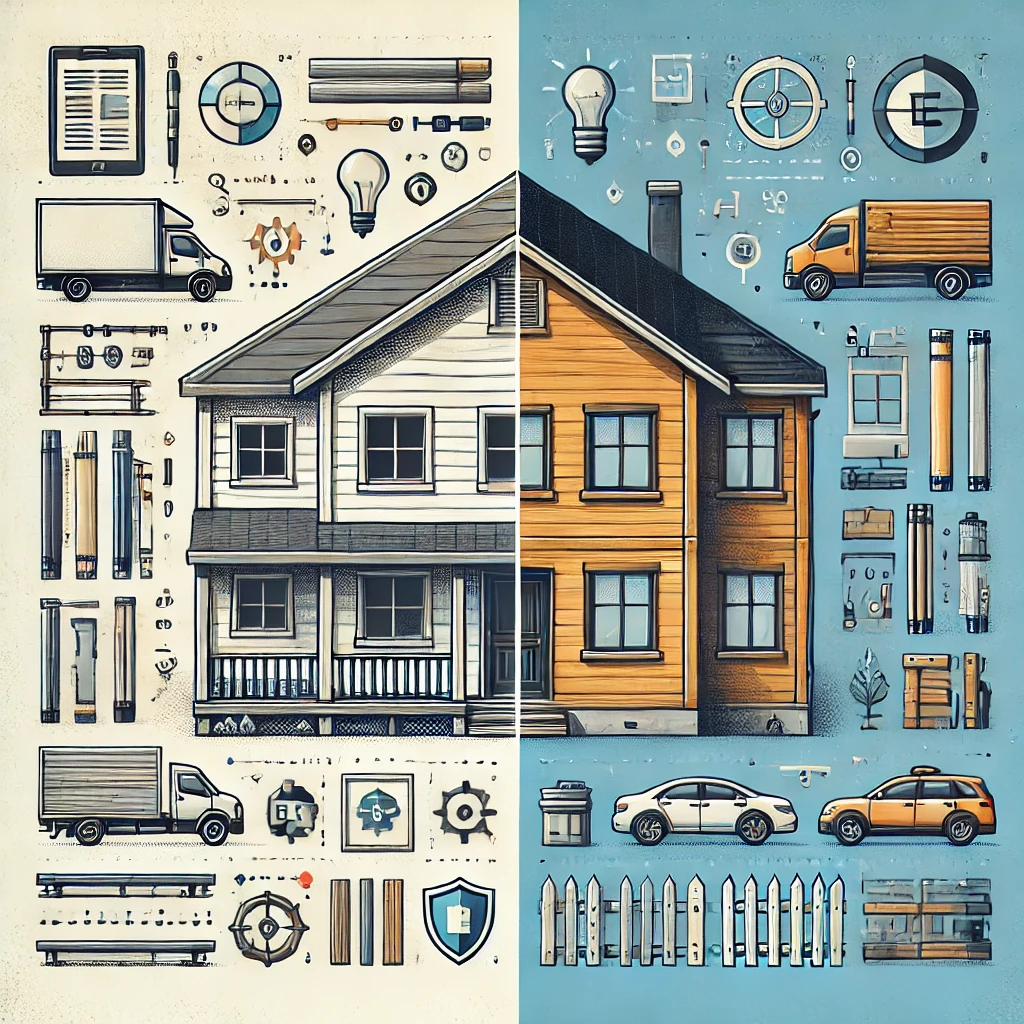Blog > Why Your Next Home Might Not Be Stick-Built
If you're considering purchasing a modular home but are more familiar with traditional stick-built homes, it's essential to compare the two. Below, we’ll explore six crucial homebuilding factors to help you understand how modular homes stack up against conventional homes.
1. Building Process
Stick-Built Homes:
Stick-built homes are constructed entirely on-site from the ground up, which has both advantages and disadvantages. One benefit is that you can visit the construction site to monitor progress and participate in a frame walk, where you can request changes before drywall installation. However, the downside is that construction is subject to weather conditions, potentially causing delays and issues like moisture in the framing lumber, which could lead to warping if not properly dried.

Modular Homes:
Modular homes, on the other hand, are built in a climate-controlled factory setting, ensuring that weather does not affect the building process. While you won't see the home being constructed at every stage, this method guarantees that when the modules arrive at your property, most of the work—such as wiring, insulation, plumbing, and even windows and doors—is already complete. This results in less finishing work needed on-site.
2. Time Frame
Stick-Built Homes:
Time is often a significant concern for homebuyers. The average construction time for a stick-built home is about six and a half months, according to the U.S. Census Bureau. However, larger or more customized homes can take closer to a year, and delays due to weather or other unforeseen issues are common
Modular Homes:
Modular homes are typically completed within three and a half to five months, significantly faster than stick-built homes. The controlled building process and the ability to prepare the site while the home is being constructed in the factory contribute to this quicker timeline. This can be especially beneficial if you have a tight schedule, such as needing to move in before a new school year or after a disaster.
3. Design Flexibility
Stick-Built Homes:
Traditionally, stick-built homes have offered endless possibilities for customization. You can work with an architect or choose from sample plans to create a design that suits your needs and preferences.
Modular Homes:
While modular homes were once thought to have a “cookie-cutter” appearance, this is no longer the case. Today, modular homes offer nearly the same level of customization as stick-built homes. Whether you prefer a Cape Cod, ranch, or two-story home, you can achieve your desired architectural style with a modular home. You can also customize the interior floorplan and select materials, bathroom and kitchen designs, and more, ensuring your modular home is as unique and personalized as any site-built home.
4. Cost and Financing
Stick-Built Homes:
Cost is a crucial consideration for most homebuyers. While stick-built homes have traditionally been the standard, they can be more expensive due to the potential for delays and unforeseen issues that increase costs.
Modular Homes:
Modular homes generally cost 10 to 20 percent less than stick-built homes, making them an attractive option for budget-conscious buyers. This is largely due to the controlled factory environment, which minimizes delays and material waste. However, transportation costs for delivering the modules to your site should be factored in. Despite this, the overall cost is typically lower, and you can finance a modular home in the same way as a stick-built home, with some lenders even offering lower interest rates due to the reduced risks.
5. Quality and Durability
Material Quality:
Both modular and stick-built homes can be constructed with high-quality materials, ensuring they last for generations. The choice of materials will impact the longevity and maintenance needs of your home.
Weather Protection:
One of the advantages of modular homes is that the building materials are not exposed to the elements during construction, which helps maintain the structural integrity of the home.
Maintenance:
As with any home, regular maintenance is key to preserving quality. Modular homes, when built with high-quality materials and properly maintained, can last as long or even longer than traditional stick-built homes.

6. Resale Value
Stick-Built Homes:
Stick-built homes have always been considered a sound investment, generally appreciating in value over time.
Modular Homes:
Modular homes used to carry a stigma similar to manufactured homes, but this is no longer the case. Improvements in design and construction have led to modular homes being on par with stick-built homes in terms of quality and resale value. Modular homes tend to appreciate in value just like traditional homes, making them a wise investment.
Ready to Build Your Dream Home? Let's Get Started! 🏡✨
Whether you're leaning towards a modular home or a traditional stick-built house, I'm here to help you navigate the process and find the perfect fit for your lifestyle and budget. Contact me today to explore your options and take the first step towards making your dream home a reality.
📞 Call me at 336.662.5962
✉️ Email me at lisawhitehurstrealty@gmail.com
🌐 Visit my website: https://www.divergentrealty.net
Don’t wait—your perfect home is just a call away!

